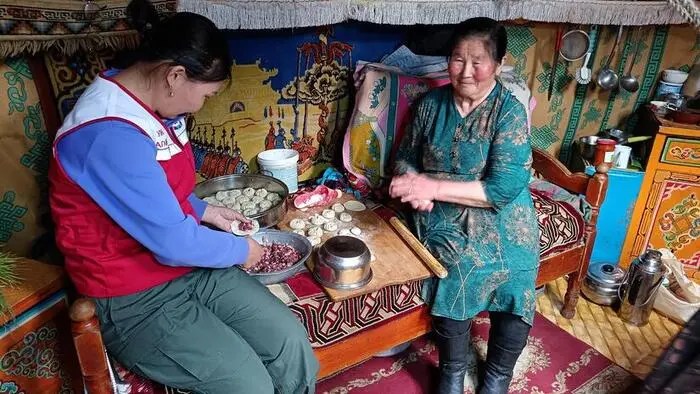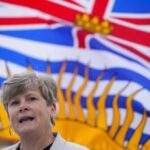The morning air in Yellowknife hangs thick with wildfire smoke as Marsha Tungalik, 67, checks her breathing monitor before stepping outside. “Twenty years ago, I never needed this,” she tells me, tapping the small device tracking her asthma symptoms. “Now I check it like others check the weather.”
For Tungalik, a Dene elder who has lived her entire life in the Northwest Territories, the connection between climate change and health isn’t academic—it’s as real as the smoke that regularly forces her to stay indoors during increasingly severe fire seasons.
This intimate relationship between our changing climate and human wellbeing is finally getting the global attention it deserves. Last week, the World Health Organization (WHO) and World Meteorological Organization (WMO) launched an ambitious initiative to help countries use climate and weather data to protect public health. The program aims to reach 80 countries within the next three years, focusing particularly on vulnerable nations where climate impacts are already affecting millions.
“This isn’t just about forecasting storms,” says Dr. Maria Neira, WHO’s Director of Environment, Climate Change and Health. “It’s about using that information to prevent disease outbreaks, reduce heat-related deaths, and build health systems that can withstand climate shocks.”
The initiative arrives at a crucial moment. Research published in The Lancet last year showed that heat-related deaths worldwide have increased by nearly 70% since the early 2000s. Here in Canada, recent heat domes in British Columbia have claimed hundreds of lives, while changing precipitation patterns have expanded the range of disease-carrying ticks and mosquitoes into previously unaffected regions.
Walking through Vancouver’s Downtown Eastside during last summer’s heat wave, I witnessed firsthand how climate vulnerability tracks closely with social inequality. Homeless residents sought refuge in overcrowded cooling centers, while those with chronic health conditions struggled without access to air conditioning—a luxury still uncommon in many older buildings across the Pacific Northwest.
“Climate change is the ultimate health equity issue,” explains Dr. Courtney Howard, an emergency physician in Yellowknife and former president of the Canadian Association of Physicians for the Environment. “Those who contributed least to the problem—Indigenous communities, the elderly, those with disabilities or chronic illness—often face the most severe consequences.”
The WHO-WMO initiative seeks to address this inequity by focusing on practical applications of climate data. In Mozambique, for example, seasonal rainfall forecasts are already being used to predict—and prepare for—malaria outbreaks. In heat-prone cities across South Asia, new early warning systems alert health workers to dangerous temperature spikes days before they occur, allowing time to set up cooling centers and check on vulnerable residents.
For Dr. Howard, these international efforts resonate with what she’s been advocating for in Canada’s North. “We need to move beyond simply collecting data to actually using it to protect people,” she says. “When we know a heat wave is coming, we should have automatic systems to check on elders. When wildfire smoke is forecast, schools should have clear protocols for indoor recess.”
The challenges of implementing such systems are substantial, particularly in regions with limited healthcare infrastructure. The new initiative acknowledges this reality by including capacity-building components like training for healthcare workers and support for technological upgrades.
Dr. Joy Shumake-Guillemot, who leads the WHO/WMO Joint Office for Climate and Health, emphasizes that success will require breaking down traditional silos between meteorologists and health professionals. “These communities often speak different languages professionally,” she explains. “Bringing them together to create actionable information is harder than it sounds, but the potential benefits are enormous.”
Here in British Columbia, some of that integration is already happening. Vancouver Coastal Health now incorporates climate projections into its long-term planning, while the BC Centre for Disease Control monitors environmental conditions that might trigger infectious disease outbreaks or air quality concerns.
For Indigenous communities like Tungalik’s, however, these systems often feel remote from daily reality. “Our people have always read the land and understood weather patterns,” she says. “But those patterns are changing faster than our traditional knowledge can adapt.”
This disconnect highlights one of the initiative’s most challenging aspects: integrating scientific data with local and Indigenous knowledge systems that have guided communities for generations. The WHO-WMO program explicitly aims to bridge this gap, recognizing that effective climate-health solutions must be culturally appropriate and community-led.
When I visited the Nisga’a Nation in northern BC last spring, community health director Sam Guno showed me how they’re combining traditional knowledge with new climate-health approaches. Seasonal food harvesting calendars now include air quality warnings, while hunting and gathering knowledge incorporates awareness of changing disease risks.
“Our people have always been adaptive,” Guno told me as we looked out over the Nass Valley. “The difference now is the speed of change.”
The WHO-WMO initiative arrives as climate change increasingly dominates health discussions in Canada and worldwide. Health Canada recently released its first comprehensive climate change health assessment, documenting risks from heat waves to food security disruptions, while medical schools across the country are incorporating climate health into their curricula.
For those on the frontlines like Dr. Howard, these developments represent long-overdue recognition of what she’s witnessed in her emergency room for years. “I’ve treated children struggling to breathe during wildfire season and elderly patients suffering from heat stroke,” she says. “These aren’t just environmental issues—they’re medical emergencies.”
As I leave Tungalik’s home in Yellowknife, she adjusts her breathing mask and gestures toward the hazy horizon. “Tell them our story,” she says. “Tell them this isn’t just about saving the planet. It’s about saving ourselves.”
In the face of our changing climate, that message has never been more urgent—or more true.






